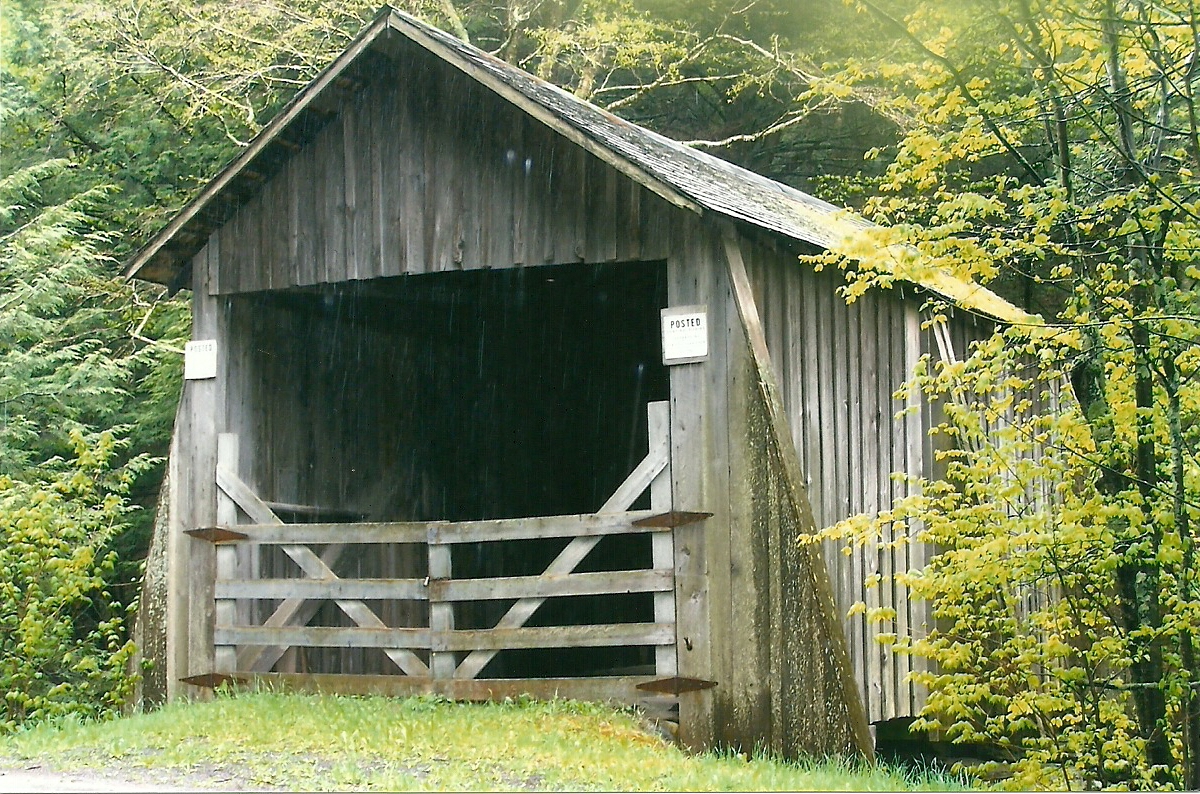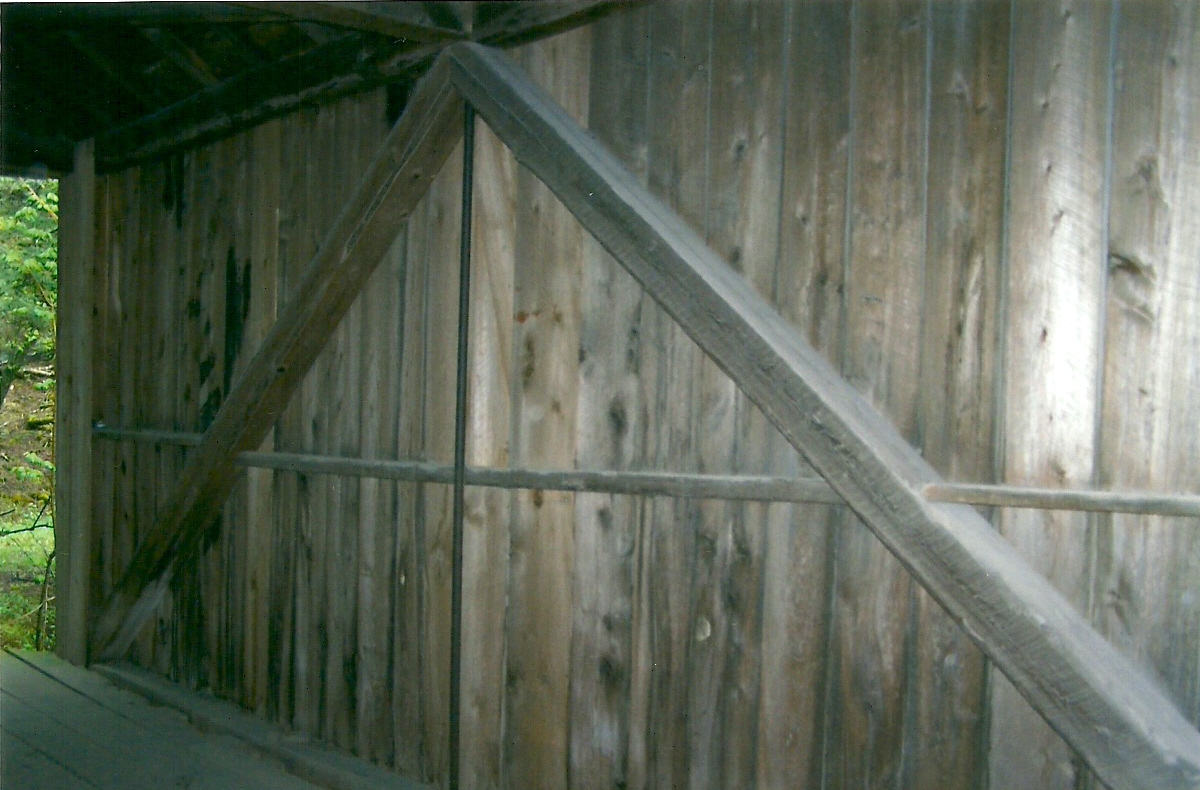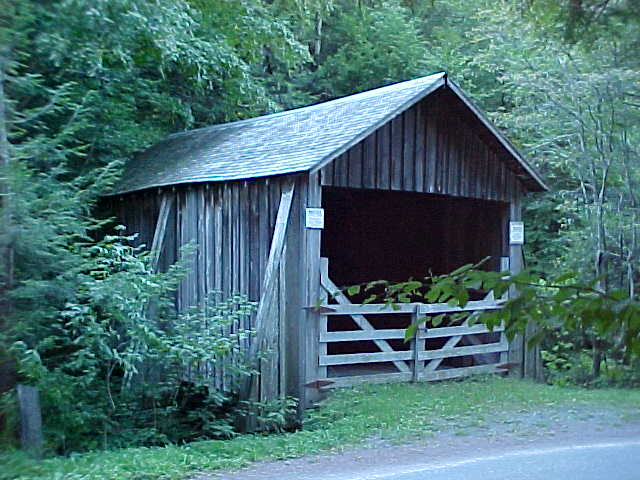FORGE COVERED BRIDGE ULSTER COUNTY NY-56-02
Built in 1906 by Salem Jerome Moot. A single span of 27′ crossing Dry Brook. Displays a Kingpost truss. From Rt. 28 in Arkville, take Dry Brook Rd. for 7.6 miles. Bridge will be on your right. GPS: N42° 04.758′ W074° 33.153′
FORGE BRIDGE NY-56-02
Forge Bridge was originally built in 1906 by Jerome Moot. The application for the National Register of Historic Places is in process. We are hoping for an answer soon.
Located in the Town of Hardenbergh about 7.6 miles south of Arkville. It is over the Dry Brook, a single span of 27 feet of Kingpost truss. This is a PRIVATE bridge with fencing over the entrance. Please ask permission, trespassers are NOT nice people.
FORGE COVERED BRIDGE
The Forge Covered Bridge is one of five covered bridges still standing in Ulster County. It is maintained by the owner and, when open, carries pedestrian traffic across Dry Brook.
Built by Salem Jerome Moot in 1906, this 27-foot-long, single span structure incorporates the Kingpost truss design. The Forge Covered Bridge is very similar in dimensions and design to other bridges in the Catskill region, all of which feature buttresses. The Forge has three such buttresses on each side. It is one of three Kingpost covered bridges in New York State.
It is believed that the Forge Covered Bridge got its name from an earlier dated iron forge which stood not far from the bridge near the brook. Colonial iron works, both forges and furnaces, were placed beside a non-failing source of water for power needed to run the huge bellows that intensified the heat for smelting and to run the large forging trip-hammer.
During the late 1800s a stringer-type bridge spanned the brook exactly where the present Forge Bridge now stands. This was an open structure with waist-high sides also of the Kingpost truss design.
At one time at least eight covered bridges stood over Dry Brook in Ulster County. Beginning at the county line, they were: Rider Hollow, Lincoln Todd, Gould, Haynes Hollow, Forge, Tappan, Ort Todd and Myers bridges. With the exception of the Forge, Myers, and Tappan bridges, the other bridges were washed away in 1901. The historic Myers Bridge was removed in 1989 and has been replaced with a modern style bridge with a roof and sides covering a concrete deck.
The Dry Brook and Dry Brook Road run side by side in the valley through its two hamlets, Dry Brook and Seager. During the 1800s and 1900s many covered bridges came and went. The greatest problem was the threat of floods which frequently ravaged the area. In December 1901, a great flood destroyed all existing bridges over the brook. On November 25, 1950 another flood destroyed all bridges of any construction except three covered bridges, two of which still exist today. The details of this particular storm and its resulting flood will long remain in the memories of the residents of Margaretville, Arkville and Dry Brook, for this flood was the quickest and highest ever known in the history of the area.
The builder of the two surviving bridges, as well as many of the numerous spans now destroyed, was Salem Jerome Moot, a very able barn and bridge framer who lived in and operated a saw mill in Dry Brook. Even though Moot lacked an education, he was a very capable builder. He wrote nothing down, but instead kept everything in his head. A story related in Ward Herrmann’s book, Spans of Time, Covered Bridges of Delaware County, NY, tells of “when they were raising the barn which belonged to Jack Todd, the people from the area gathered to help and watch the event. It was a very large overshot barn with a stable beneath and a hay barn overhead. The men thought they were going to see a mixed-up deal, but Moot called every part right. He directed the erection of the barn’s assembly of pre-cut parts as he did in the bridge situation, and every part fit with nothing left over.”
The Forge Covered Bridge was 22 years old when repairs were first needed. On November 9, 1928 the minutes of the Town of Hardenbergh’s meeting state that the board directed the Town Clerk to present the following note to the County Supervisor of Highways, Kingston, NY: “We, the undersigned members of the Town Board of the Town of Hardenbergh, Ulster County, NY hereby wish to notify you that the bridge at Seager, NY, known as the Forge Bridge which is a bridge with a span of more than 25’ is in unsafe and dangerous condition. Now, therefore, we would ask that you would inspect said bridge at your earliest convenience to the end that a new bridge may be built to replace the old one.” Nevertheless, the bridge was not to be replaced. To save it from sure destruction, it was bought in 1953 from the town for the price of one dollar by Mr. Kingdon V. Gould, who owned the Furlough Lodge, also located in the Dry Brook valley. Because of the bridge’s frail condition, gray wooden gates were installed across the entrance to prohibit the passage of traffic. In December 1976, Mr. Gould’s son embarked on an extensive and conscientious restoration project. As a result, the Forge Covered Bridge is still one of New York’s treasured covered bridges.
Excerpted and revised from Timbers of Time by Patricia Bartels Miller.
Note: There is a beautiful sight immediately downstream from the bridge where swift running water has worn the sandstone bedrock into beautiful curves, deep cuts and various sized pot holes. Be sure to check out these natural formations when visiting this bridge.
Directions to the bridge:
From the new bridge across Dry Brook on State Route 28 in Arkville, take Dry Brook Road for almost 7.6 miles, the bridge sets next to the roadway.










